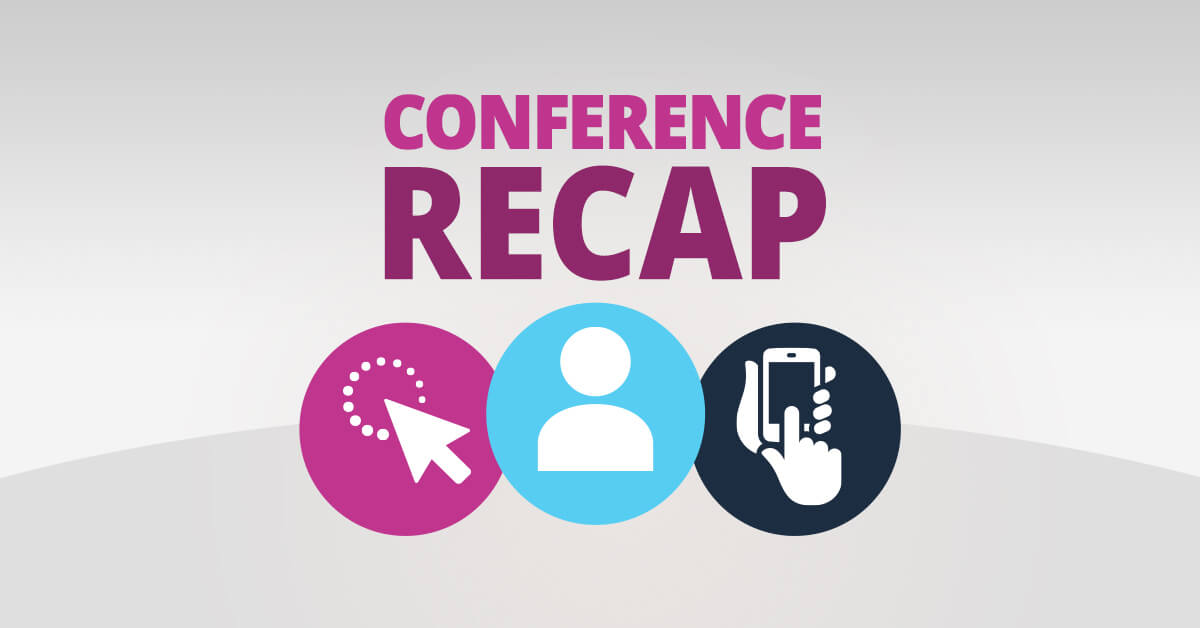Recently, members of our creative team attended the Nielsen Norman Group (NN/g) conference in San Francisco, California to learn about UX (user experience) design. It consisted of seven full-day, immersive classes taught by the UX designers and usability consultants at NN/g.
Why was it beneficial to attend this conference?
Understanding the principles of user-centered design is a must for any professional who will design or affect the interaction between a person and a system. At its best, UX has the ability to make that interaction easy, productive, enjoyable, engaging, and satisfying. The NN/g conference provides building blocks and detail on theories related to creating a successful user-centered design.
Below are a few of our takeaways from the conference.
Design to accommodate, not to teach
User-centered design was a key takeaway from the conference. Good design should be almost invisible to the user, as in, they should not have to spend a lot of time or effort learning something new in order to use your product. Taking into consideration the user’s background knowledge and habits gained while using other products or visiting websites will help guide a design that is intuitive to most users.
A simple example of this is placing a logo in the header of a website that users can click on to get back to the homepage from any internal page. This is an established guideline that most sites follow, so not including that, moving it, or having the logo link somewhere other than the homepage will confuse and frustrate the user. Although there are appropriate times to introduce something new, it’s important to make as much as you can straightforward and easy to use, so users don’t have to learn new rules, or adjust their habits.
Good UX is a competitive advantage, both externally and internally
UX has an impact both internally and externally. Designing a good user experience results in happier, less stressed users. People like interacting with something that is easy for them to understand, because it makes them feel like they’re an expert at the task at hand. User trust is increased as well, making it more likely for them to come back, and even recommend your product. Internally, if most of your customers can easily use your product, it decreases the amount of support you need to provide them. Additionally, a good user experience can increase productivity and job satisfaction for employees. Both internal and external benefits have the opportunity to increase ROI.
You are not your user (neither is anyone on your team)
It’s vital to understand that you are not your user. It’s impossible for you, or anyone on your team designing your product, to objectively test it. Asking who your audience is (new or returning, novice or advanced, age, and gender) is vital when conducting a successful user test. Even if you or someone on your team fits into your target demographic, you know too much about the project. Your decisions and problem solving through the development of the product puts you at an advantage, compared to someone using it for the first time (your users).
People like things they’re good at
If you develop an app, website, or digital tool that is easy and intuitive to use, people will be satisfied, feel a sense of accomplishment, and use it more often. There is a direct correlation between success and satisfaction, which basically means if you design a system where users can complete a task efficiently and effectively, the will have a positive experience.
For example, if a user is going to order a pizza online, but the ordering interface is cumbersome and complicated, it will affect that customer’s opinion of the brand and they will be less likely to order from (or eat at) that pizza restaurant again.
“The Pinky Finger Fail”
Translation: When it comes to mobile, users should not have to struggle to use your interface. The average impact area of a finger is .75 inches. If the user uses their thumb, it is 1 inch.
As a designer, it’s important consider this when you lay out an interface for a phone or tablet. Having enough room between buttons has everything to do with a successful user experience. Plus, frequent-use and desired action targets need to be designed to require less tap precision. These simple, but important, rules (and many more) should be considered when creating a mobile design interface.
End-to-end user experience
When the iPhone 6 came out, there were lines of people waiting to get their own. Many shot video of themselves “un-boxing” the device, and that’s when something awful happened. When a new iPhone 6 owner took off the tight-fitting lid of the box, a vacuum sucking action occurred, and pulled the device out of the box and on to the ground. The engineers at Apple didn’t think about the complete experience. As designers and marketers, we have to think about the entire customer experience, which requires us to think beyond our immediate task.
In conclusion
For those interested in attending an NN/g conference you’ll learn a lot about UX best practices and come back with new tools under your belt that you are able to utilize to create a great product for your organization or clients.
